Sequences and series are an area of mathematics that often yield unexpected and possibly unintuitive results, a sequence being a collection of consecutive numbers which are related in some way, and a series being the sum of these numbers. Sigma notation is often used for the sum of a series, where the formula for values in the series, f(r) is given, and i is the start number to be put into the formula and n the final number, as below.
This can be a tool for many useful things, but here we are going to consider the functions n, n² and n³ as the result from these can be ascertained from physical demonstrations (though showing n³ requires an extra dimension), and they can be used to calculate a formula for any function that is a polynomial up to n³.
One of the most famous stories about these sums concerns the function n and Carl Friedrich Gauss, a mathematician and physicist who lived between 1777 and 1855. From an early age he was a great mathematician, and so when at school his teacher endeavoured to find things for him to do. One day, to keep him occupied, the teacher told him to add up all the numbers from 1 to 100, otherwise written as ![]() . Unfortunately for the teacher he had and answer in seconds: 5050. Instead of manually going through and adding all the numbers, he had realised that you can pair opposite ends of this series to 101 (100+1, 99+2, 98+3 etc.), and do so until you sum 50 and 51, which then gives you 50 lots of 101, or 5050. This was an ingenious way of finding the answer, but more to mathematicians a defined formula would be more useful. To do this one can quite simply turn to building blocks. The first step in this is to ask what sort of numbers you get for the first few values, which are 1, 3, 6, 10, 15, 21 and so on. This may or may not be familiar to you, but are in fact the triangle numbers, which makes sense when you think that when forming a triangle number you are adding a number one more than the previous number added. If we construct this for, say, the fourth triangle number 10, we will have as below.
. Unfortunately for the teacher he had and answer in seconds: 5050. Instead of manually going through and adding all the numbers, he had realised that you can pair opposite ends of this series to 101 (100+1, 99+2, 98+3 etc.), and do so until you sum 50 and 51, which then gives you 50 lots of 101, or 5050. This was an ingenious way of finding the answer, but more to mathematicians a defined formula would be more useful. To do this one can quite simply turn to building blocks. The first step in this is to ask what sort of numbers you get for the first few values, which are 1, 3, 6, 10, 15, 21 and so on. This may or may not be familiar to you, but are in fact the triangle numbers, which makes sense when you think that when forming a triangle number you are adding a number one more than the previous number added. If we construct this for, say, the fourth triangle number 10, we will have as below.

We cannot ascertain a formula from this though as that is what we’re looking for in the first place. What if we add another triangle of the same size though? As can be seen below, we now have a rectangle of height 5 and length 4, or n×(n+1).

What then is the sum of one of the triangles, well it is 10, or ½n(n+1). This clearly works for all numbers n as every time you add one to n you add and extra row on each end, then move the top triangle right one and down one creating a rectangle of the above form. Hence we have a formula for ![]() .
.
What happens if we want to know the sum of a series of square numbers though? Well if we again consider this up to the fourth number we have a sequence of 1, 4, 9, 16. If we transfer these to physical blocks, we can see that these can be arranged to form a square-based pyramid, and their sums are square pyramidal numbers.


Now the question is how some number of these pyramids can be arranged into a cuboid with side lengths in terms of n. If we keep our first pyramid as shown above, the second one is arranged as below.

A third pyramid then slots into the gap shown.

Another structure the same from the one above except with the left hand pyramid moved up and along and the right hand one moved right and down can then be put on top of this to form a cuboid.


Here we see 6 of the pyramids forming a structure of dimensions 4×5×9, and in a similar way to the two dimensional case above we can extend this finding to a general case where ![]() .
.
The formula for a sum of cubes, ![]() , is
, is ![]() . This can be ascertained by considering 4-dimensional pyramids formed of cubes of sidelength 1, 2, 3, … , n-2, n-1, n, but the human mind isn’t particularly adept at imagining the fourth dimension, so this method isn’t so useful, however the reverse process is something to think about. Here we see that 4 4D pyramids as described above can be arranged in such a manner that they produce a 4D cuboid of sidelengths n, n, n+1, and n+1. This can be taken up to any number of dimensions, where the xth dimension is used to find a formula for
. This can be ascertained by considering 4-dimensional pyramids formed of cubes of sidelength 1, 2, 3, … , n-2, n-1, n, but the human mind isn’t particularly adept at imagining the fourth dimension, so this method isn’t so useful, however the reverse process is something to think about. Here we see that 4 4D pyramids as described above can be arranged in such a manner that they produce a 4D cuboid of sidelengths n, n, n+1, and n+1. This can be taken up to any number of dimensions, where the xth dimension is used to find a formula for ![]() .
.
These results can be used for any polynomial up to a third order polynomial by simply splitting the polynomial into sums of cube values, square values, single values, and constants, however if a formula is produced in the same method in higher dimensions, results for higher order polynomials can be calculated, though that is rather a large if.
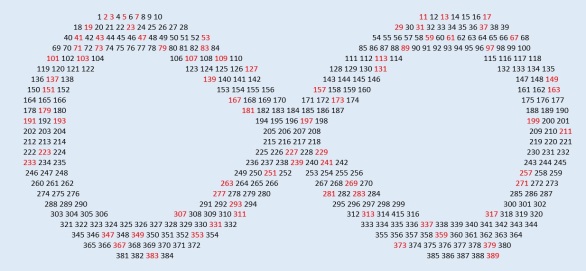



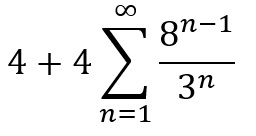

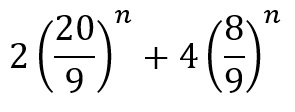
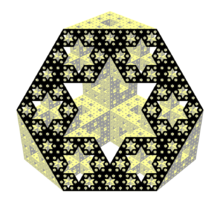
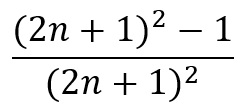
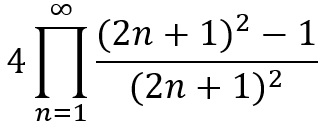




















































 Which is very useful if you want to get a grasp of prime numbers as using this you can use a link with normal integers, which are far easier to understand and work with. The next person to consider the Z function after Euler had finished was Bernhard Riemann himself, who sought to produce an equation that followed the same pattern when s>1, but also for s<1. From his research he came out with this equation:
Which is very useful if you want to get a grasp of prime numbers as using this you can use a link with normal integers, which are far easier to understand and work with. The next person to consider the Z function after Euler had finished was Bernhard Riemann himself, who sought to produce an equation that followed the same pattern when s>1, but also for s<1. From his research he came out with this equation: The Riemann Zeta function as it’s known today. This equation did have one pitfall: it again produced no result for s=1, but for every other number, real or complex, it gave a value. The next step once a function was formed was to find out which values of s gave interesting outputs. “Interesting” in Riemann’s sense meant a value which gave an output of zero. Straight away -2 pops up, then -4, then -6, and so on for all negative even integers. That was all very exciting, but they were all real values, were there any on the complex plane. Naturally some were soon found, such as
The Riemann Zeta function as it’s known today. This equation did have one pitfall: it again produced no result for s=1, but for every other number, real or complex, it gave a value. The next step once a function was formed was to find out which values of s gave interesting outputs. “Interesting” in Riemann’s sense meant a value which gave an output of zero. Straight away -2 pops up, then -4, then -6, and so on for all negative even integers. That was all very exciting, but they were all real values, were there any on the complex plane. Naturally some were soon found, such as

